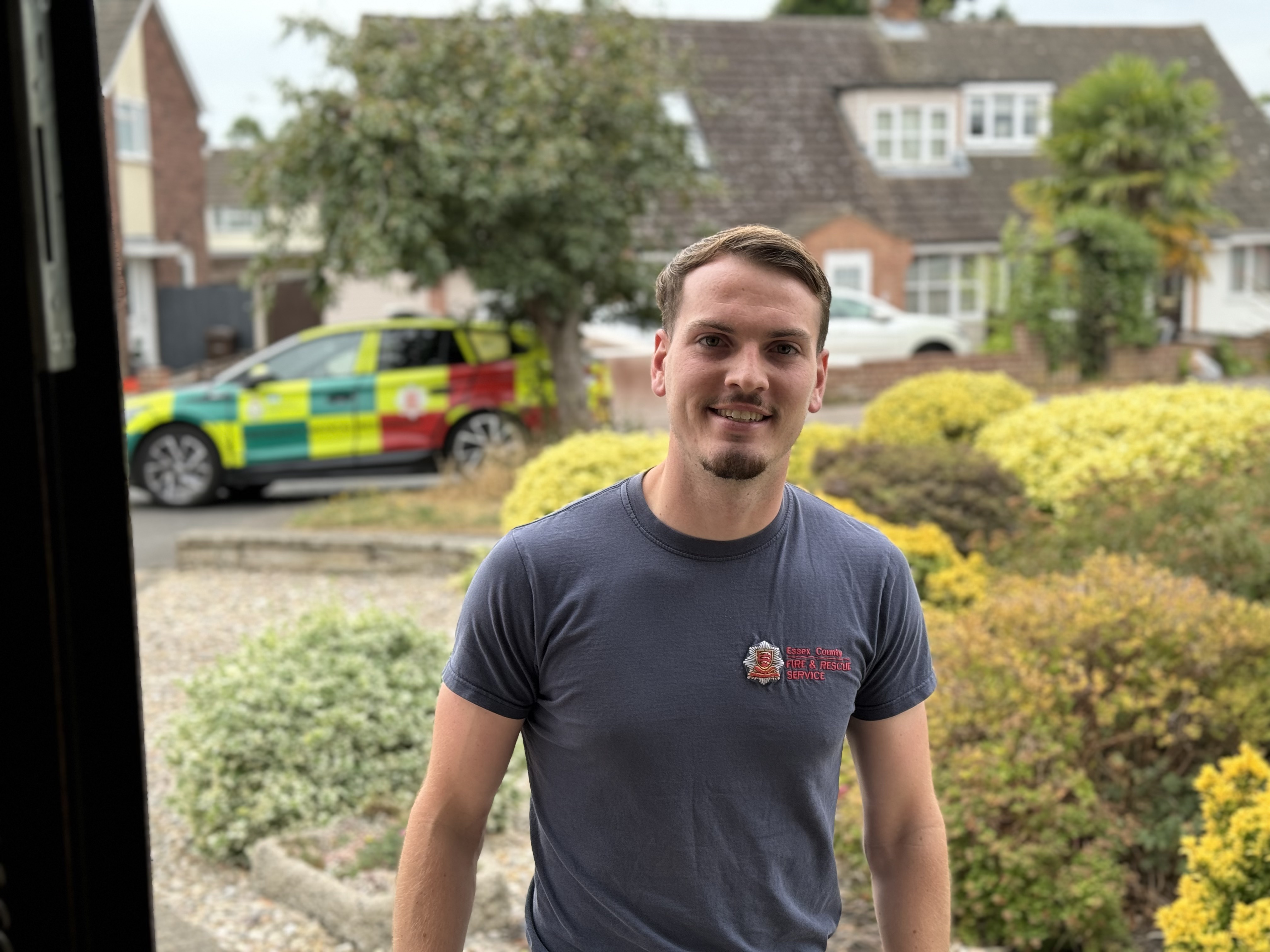Henry Whitehurst
Henry was born in Birmingham in 1881 to Thomas, an Iron Forge Roller, and Mary A Whitehurst, nee Mason, who had five other children: Thomas, George, Hannah, Joseph and Sarah.
By 1903 he was a well know athlete and held several running and swimming championships, plus honours for gymnastics. In 1903, the Birmingham Daily post wrote, referring to his career “`For a good all round athletic performer we would respectfully draw atten- tion to H Whitehurst of Mitchell and Butlers who seems capable of winning races at any distance he sets his mind on and was the best all-round runner of the Midlands at any distance from 220 yards to the mile”
In 1907 Henry joined the Cape Hill Brewery Fire Brigade which belonged to Messrs Mitchel and Butler and he started competing in the Brigade competition work at Perry Bar, Birmingham, successfully regaining the championship in the Midlands for the one-man drill for five years.
Shortly after, Henry moved to Southend and joined the Brigade as a voluntary fireman, his actual occupa- tion being a Chauffeur. At Southend his competition work blossomed. He established the record of 28 sec- onds in the one-man drill, winning this also at the National Fire Brigade Union Championship. He also won at both Scarborough (1907) and Tonbridge (1908). In 1910 he was entered for the championship gold medal of the Eastern District. Southend pinned their faith on Harry Whitehurst and they had good cause for he put up the extraordinary time 29 seconds for the drill. In all Henry had over 40 medals, besides other trophies gained in Fire Brigade competitions.
On Whit Tuesday of 1911 he was engaged in duty for the Southend Brigade when he sustained an injury to his ankle. He was a member of the crew that manned the escape ladder when it was turned out to a fire. On arrival the escape pulled up and the order was given to jump clear and it was then the Harry sustained his injury which was to cost him dear. As he landed, he sprained his ankle and, over time, the injury got worse and an infection set in, causing the leg to be diseased past the knee. Eventually, he attended at the London Hospital and an x-ray revealed that his leg would have to be operated on or it would cost him his life. After a couple of operations, his leg was amputated above the knee.
As Harry was not a servant of the Southend Corporation, being a voluntary Fireman, he was not entitled to any compensation under the Workman’s Compensation Act, and in addition the Corporation had no power to make him any payment at all either as compensation or in the nature of a gratuity.
As a result of his amputation he could not carry on his occupation as a chauffeur.
In view of these circumstances, the Mayor of Southend-on-Sea Charlton Hubbard, appealed to the towns- people in order to prevent Harry suffering as he was only a voluntary fireman. By July 1912 this appeal had reached £229 8 s and 9d. In addition, during the 1913 meeting of the South Eastern branch of the Fire Bri- gade Union a donation was made to the Fireman Whitehurst Fund.
In 1915 Harry married Lillian M Taylor and in October 1916 they had a son Henry G Whitehurst and, on the 19 April 1919, they had a daughter Nellie.
By 1919 Henry had gone into business as a Car Dealer and with a man called Albert Hedges. In September of that year he was charged at Greenwich with stealing two motor cars, both were remanded on bail. When they appeared at the Central Criminal Court in November the same year, they were found not guilty and discharged.
In September 1922 he was subject of a theft of motor vehicle. He offered a car for sale and a man and woman who came for a trial run had expressed themselves satisfied with the vehicle gave a cheque for £100. Mr Whitehurst declined to part with the vehicle until the cheque had been cleared but agreed to the purchaser having another trial run with a chauffeur. During the lunch hour, the chauffeur left the car out- side the restaurant where the customers were having lunch. When he returned the car and the customer had gone. Mr Whitehurst found that the £100 cheque was worthless. The car was traced to Tooting, Lon- don where it had been sold for £40.00.
On 11th July 1930, Henry was found shot dead in his garage in London Road, Westcliff on Sea. At the inquest on Monday 14th July, his brother-in-law, John Arthur Taylor told the court that for seven or eight years, the deceased had dealt in firearms - rifles and revolvers. His widow stated that on Friday her husband came home for his mid-day meal. He told her that he had been cleaning revolvers and if he had time he would go on cleaning them during the afternoon. He was thoroughly used to firearms of every description and he had made a practice of pistols as a sort of hobby and always carried an automatic in his hip pocket. He was usually cheerful and was again so when he left her on Friday afternoon. She also stated that he had no wor- ries and that at ten minutes past seven that evening he had telephoned her and asked her if she would like to go out in the car. She replied she would and he said he would call about a quarter to eight.
When asked if she had ever heard her husband make a remark when a man committed suicide she stated that he had said it was a cowardly way out - a cowards trick. In reply to a question from Mr D.G. Varney, representing the widow, she replied that she believed that her husband was so familiar with firearms he had got careless with them.
The doctor who examined him gave evidence that the bullet had passed through the body breaking a rib in its passage. There were no marks of powder on the body or clothing. Death was due to hemorrhaging caused by the bullet wound. The fact that there were no marks of powder suggested that the wound was not intentionally self-inflicted and the course of the bullet was such that in the witness’s view it would have been impossible for the deceased to have shot himself with his right hand. Detective Inspector Fletcher stated that he had found four dummy cartridges in the revolver and another different dummy cartridge which had jammed the breach. It was evident that a live cartridge had got among the dummies and Mr Whitehurst was killed testing the action of the gun in the belief that all the cartridges were dummies.
The Jury recorded a verdict of accident death.
Probate was granted on 3rd September to his wife Lillian to the sum of £9185 15s 3d
References
ancestry.co.uk
British newspaper Archive
Chelmsford Chronicle dated 9th Feb 1912 Chelmsford Chronicle dated 21 Nov 1919 Essex Newsman dated Saturday 19 July 1930
All Fired Up’ is a series of articles written by our Museum volunteers about the history of the fire service in Essex.
Volunteers spend many hours researching the collection, often uncovering untold stories and finding interesting facts that would otherwise be lost.
To share these invaluable snippets of history with you we are making some of this research available. Read the full list here.


